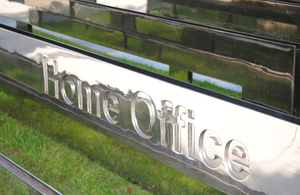New Statistics and Reports Published on Animal Research
The annual statistics showing scientific procedures on living animals during 2013 have now been published

Home Office statistics on animal research have been published today
Little change in figures
Figures published today by the Home Office show virtually no change in the number of animals used in scientific procedures.
Within this figure, for the second year running, the number of animals used for scientific procedures decreased, but this has been counteracted by a small rise in the number of genetically modified animals bred.
The Animals in Science Regulation Unit (ASRU) has also published its annual report for 2013. The report provides an account of the Home Office’s activities in relation to the regulation of animal research. It looks at how the transposition of a European Directive on animal research has been brought in to standardise regulations across EU countries, including the UK. The report also provides details of inspections and cases of non-compliance with the Animals in Scientific Procedures Act 1986, as well as the outcomes of such cases completed in 2013.
Also published today was the Home Office’s response to a report from the independent Animals in Science Committee (ASC) into allegations about animal welfare at Imperial College London (ICL).
The call to reduce animal testing
Home Office Minister Norman Baker said:
I am encouraged by the way the scientific community has responded to the coalition government’s call to reduce the use of animals in scientific procedures, which I have been able to see first at hand on visits to establishments.
Seeking to reduce the use of animals is not only the right thing to do morally, but it also gives us an economic opportunity to export our knowledge around the world.
He added:
The overall 2013 procedure figures are similar to the previous year. However, there has been a decrease two years running in the number of animals used for experiments other than breeding.
I am concerned by potential excessive breeding of genetically altered animals - there has been an increase in this, particularly with zebra fish. I have commissioned a review on what steps can be taken to drive these figures down.
Imperial College London
The Home Office published its response to the ASC report on two reviews carried out into ICL following allegations of abuse at the research establishment. The recommendations of the Committee have been accepted and will now be acted upon where necessary.
Home Office Minister Norman Baker said:
I have carefully considered the Animals in Science Committee’s (ASC) report and have accepted all their recommendations. I have also discussed specific matters with Imperial College London (ICL). I am pleased with the progress ICL have made in addressing the issues.
The current establishment licence holder has stood down. I am keen to see ICL continue to move forward in its commitment to maintaining high standards through effective leadership.
The use of animals in scientific research is regulated under the Animals Scientific Procedures Act 1986 to ensure it is only carried out where there is a clear potential benefit to people, animals or the environment and where there is no other means of obtaining these benefits.
All scientists and researchers undertaking animal research in the UK are required to take into account the ‘3Rs’ - measures to replace, reduce, and refine animal use - when devising their programmes of research proposals. When work is licensed, all reasonable steps must be taken to minimise the numbers of animals used and any suffering likely to be caused.
Statistics of Scientific Procedures on Living Animals 2013 can be found here